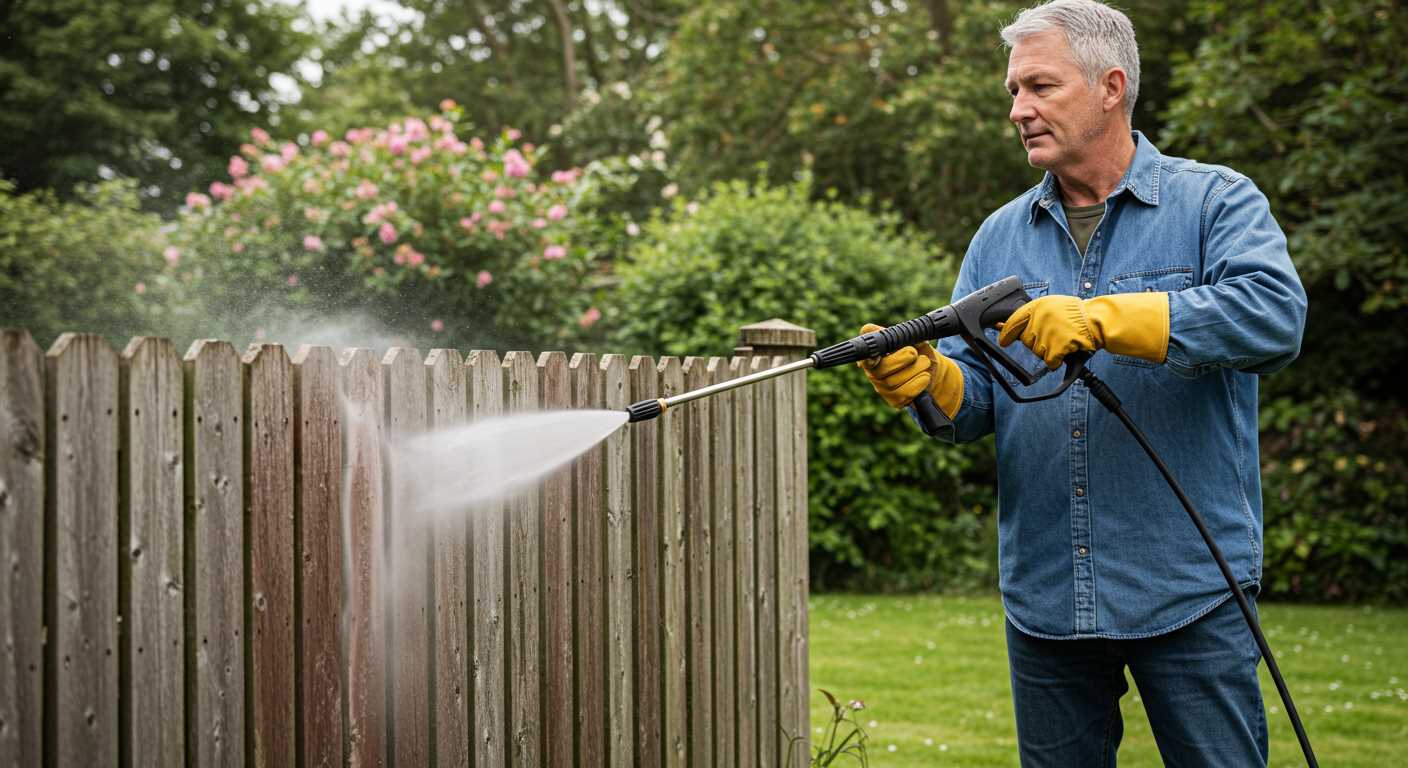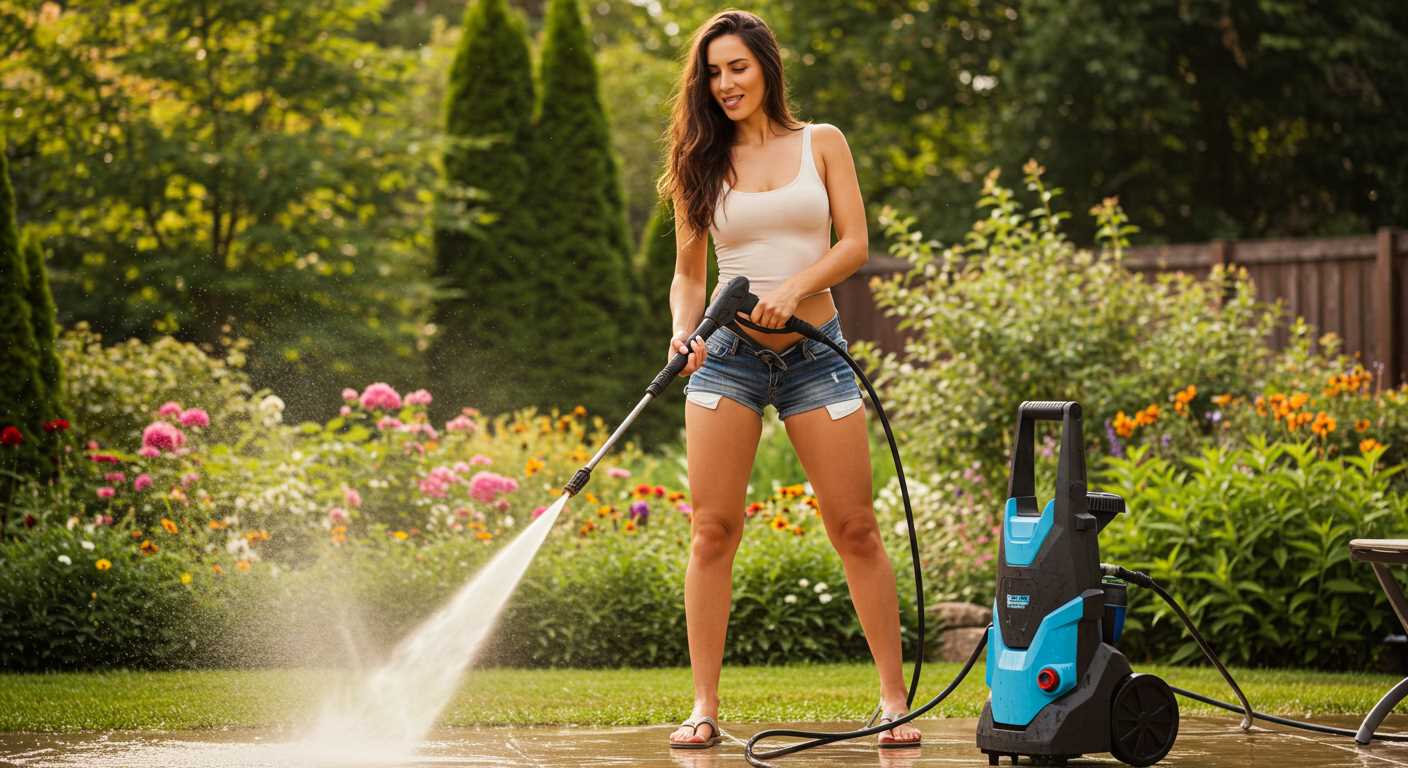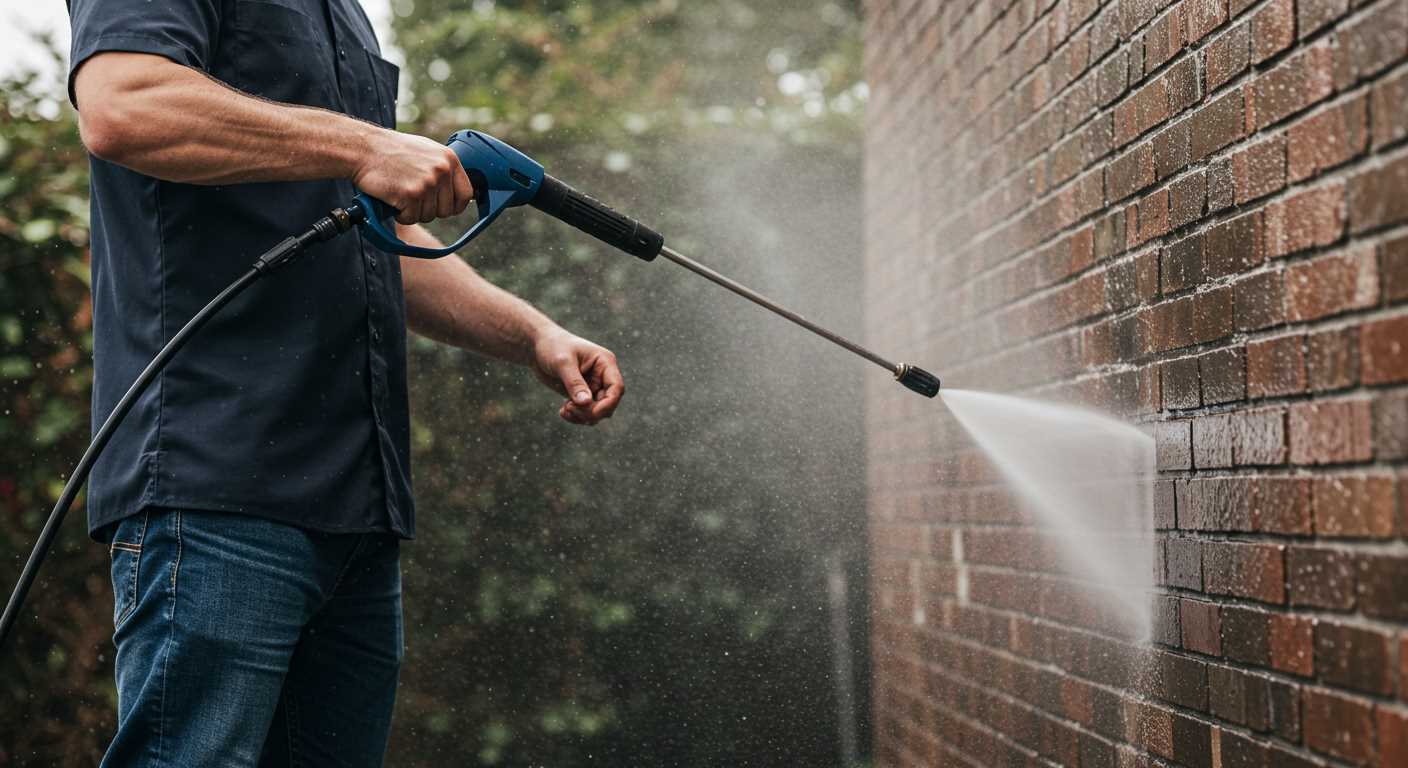


First, check the water supply. A consistent flow is crucial; a clogged hose or closed valve can lead to inadequate performance. I’ve encountered numerous cases where simply ensuring the source was fully open resolved what seemed like a complex issue.
Next, inspect the connections for leaks. I recall a particular instance where a small crack in a fitting caused an entire system to lose pressure. Tightening connections and replacing worn seals often makes a significant difference. Keeping spare parts on hand has saved me time in many situations.
Another frequent culprit is the inlet filter. Debris accumulation can restrict water flow, drastically affecting output. During my years in the field, I’ve learned that regularly cleaning or replacing this filter can prevent many headaches down the line.
Finally, listen for unusual sounds from the machine. A loud grinding or knocking noise often indicates internal damage or wear. In my experience, early intervention can prevent costly repairs. Addressing these issues promptly ensures longevity and maintains performance.
Identifying Common Symptoms of Pump Issues
When dealing with pump malfunctions, several noticeable signs can indicate underlying problems. Recognising these symptoms early can save time and costs associated with repairs. Here are the key indicators to watch for:
- Low Pressure: A significant drop in water pressure often suggests a blockage or internal wear. Check for clogs in the nozzle or hose.
- Water Leakage: Any signs of water escaping from the unit may indicate seal damage or loose fittings. Inspect all connections and seals thoroughly.
- Strange Noises: Unusual sounds during operation, such as grinding or rattling, can point to internal component failure. Investigate for loose parts or worn bearings.
- Inconsistent Flow: If the flow of water is sporadic, it might be due to air entering the system. Ensure all connections are airtight and check for cracks in the hoses.
- Overheating: Excessive heat can result from prolonged use without adequate cooling. Allow for cool-down periods and check for proper water circulation.
Addressing these symptoms promptly can prevent further damage. Keeping a close eye on performance will enhance longevity and reliability. For those looking to enhance their cleaning equipment, consider exploring motorcycle pressure washer foam options for effective cleaning solutions.
Checking for Blockages in the Inlet and Outlet
Begin by examining the inlet filter. This small mesh component can easily become clogged with dirt, debris, or mineral deposits over time. Remove the filter and rinse it under clean water to ensure unobstructed flow. If it’s heavily soiled, consider soaking it in a vinegar solution to dissolve any stubborn build-up.
Next, inspect the inlet hose. Look for kinks or damage that could impede water flow. A blocked or pinched hose can create significant pressure issues. If necessary, replace the hose to restore proper function.
Moving on to the outlet, detach the nozzle and check for blockages. Accumulated dirt or hard water deposits can restrict water flow, leading to decreased performance. A needle or small wire can assist in clearing any stubborn clogs. Ensure that the nozzle is free from debris before reattaching it.
Also, examine the connection points where hoses attach to the machine. Any obstruction at these junctions can hinder performance. Tighten any loose fittings and ensure there are no visible signs of corrosion that could affect the seal.
Regular maintenance of these components is vital. Make it a habit to check for blockages each time before use, as this can save time and enhance the longevity of the equipment. A few minutes spent on inspection can prevent frustrating interruptions during cleaning tasks.
Inspecting the Unloader Valve for Malfunctions
Begin with a visual examination of the unloader valve. Look for signs of corrosion or damage. A faulty valve often leaks water or shows wear, indicating a need for replacement. Check the connections for tightness; loose fittings can lead to pressure fluctuations.
Next, manually operate the valve. It should move smoothly without any sticking. If there’s resistance, clean or lubricate the moving parts. Accumulated debris can hinder its function, so a thorough cleaning is essential. Use a soft brush to remove any dirt or buildup around the valve.
Test the valve by starting the machine with the nozzle blocked. The unloader should divert the flow back to the inlet. If it doesn’t, a malfunction is likely. Listening for unusual sounds during operation can also be telling. A rattling or whining noise suggests internal issues.
If all else fails, consider disassembly for an in-depth inspection. Take care to note the order of parts for reassembly. Examine the internal components for cracks or deformation. Replacing worn parts can restore optimal performance and extend the lifespan of the equipment.
After repairs, run the system again to ensure everything functions correctly. A well-maintained unloader valve plays a significant role in the overall performance of the equipment, making regular inspections a priority.
Assessing the Condition of the Pump Seals
Inspect seals for signs of wear or damage. A thorough examination can prevent more severe complications down the line. Look for the following issues:
- Cracks or tears in the rubber or synthetic material.
- Deformation or hardening, which indicates deterioration over time.
- Presence of leaks around the seal area, often visible as water stains or puddles.
Replace any seals that show these symptoms. Quality seals will maintain pressure and prevent leaks, ensuring optimal functionality. When I encountered significant performance issues in an older model, replacing worn seals restored its efficiency remarkably.
Consider using high-quality replacement seals that match the manufacturer’s specifications. Substandard parts may lead to further complications, ultimately costing more in repairs.
During one of my evaluations, I learned that seals often degrade faster in environments with extreme temperatures or chemical exposure. Keeping the equipment in a controlled environment can prolong the lifespan of these components.
In addition, regular maintenance checks help catch wear early. A proactive approach saves time and reduces costs in the long run. Remember, consistent upkeep can significantly extend the life of your equipment.
While inspecting seals, also consider how seals interact with other components. If the unloader valve is malfunctioning, it can put additional stress on seals, causing premature failure. For those interested in maintaining their equipment, I recommend checking resources on the best air compressor for computer cleaning to further enhance your maintenance skills.
Verifying the Oil Levels and Quality in the Pump
Checking oil levels and condition often reveals overlooked issues. Begin by locating the oil fill cap, typically situated on the side of the unit. Remove the cap and inspect the dipstick or oil reservoir. The oil should be at the recommended level; if it’s low, top it up with the specified type. Avoid mixing different oil types, as this can compromise performance.
Assessing Oil Quality
Next, examine the oil’s appearance. Fresh oil is usually clear and golden, whereas contaminated oil appears dark or milky. If the oil is thick or gritty, it’s time for a change. Old, degraded oil fails to provide adequate lubrication, leading to increased wear on internal components. If the oil displays signs of emulsification, water has likely infiltrated the system, indicating a potential seal failure.
Changing the Oil
Regular oil changes enhance longevity and efficiency. Follow manufacturer guidelines for frequency, but a good rule of thumb is every 50 hours of operation or at the start of each season. To change the oil, ensure the equipment is off and cool. Remove the drain plug, allowing the old oil to flow out completely. Replace the plug before filling with new oil, ensuring it meets the specifications detailed in the manual. After filling, run the machine briefly to circulate the new oil, then recheck the level.
Monitoring oil levels and quality can prevent significant problems down the line, ensuring smooth operation and extending the life of the device.
Testing the Power Supply and Motor Performance
Start by examining the power supply. Ensure that the outlet is functioning properly by plugging in another device to verify that it’s providing electricity. If the outlet is operational, check the extension cord for any damage or wear. A frayed or damaged cord can lead to insufficient power reaching the motor.
Voltage Testing
Utilising a multimeter can help determine if the correct voltage is reaching the motor. Set the multimeter to the AC voltage setting and measure the voltage at the outlet. It should match the specifications indicated on the motor’s nameplate. If the voltage is too low, investigate further back to the circuit breaker or fuse box.
Motor Inspection
Next, inspect the motor for any unusual sounds or vibrations during operation. A humming noise often indicates a seized motor or internal failure. Checking for overheating is also critical; if the motor feels excessively hot, it could signify an issue with the bearings or winding insulation. Allow the motor to cool down before further investigation.
| Symptom | Possible Cause | Recommended Action |
|---|---|---|
| Motor does not start | Power supply issue | Check outlet and extension cord |
| Motor hums but does not run | Seized motor | Inspect for internal damage |
| Motor overheats | Poor ventilation or bearing failure | Clean vents, lubricate bearings |
After these checks, if the motor operates correctly but performance issues persist, consider examining the pump assembly itself for further diagnostics. Each component plays a role, and understanding the power dynamics can prevent more complex failures down the line.




.jpg)


